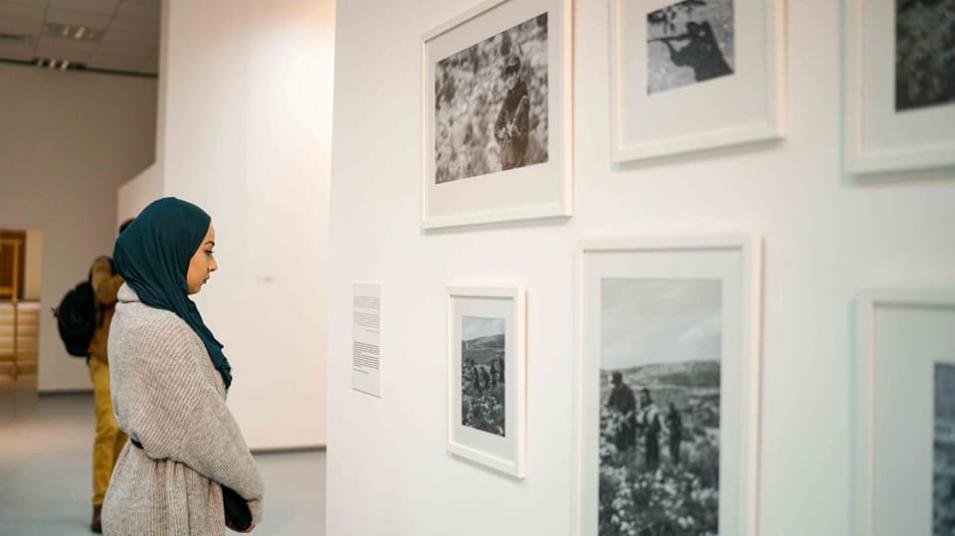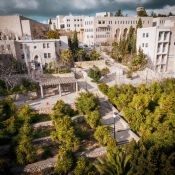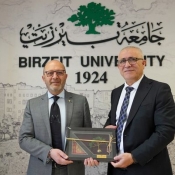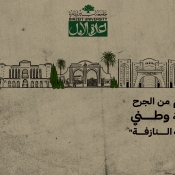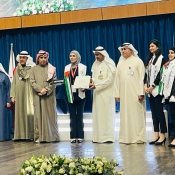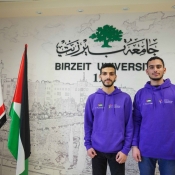"On Women in Revolutions" inaugurated at Birzeit University Museum
The Birzeit University Museum, in cooperation with the A.M. Qattan Foundation and GalleryOne, inaugurated the “On Women in Revolutions” exhibition, which highlights pioneering women figures in the history of Palestinian revolutions.
The items and works of art displayed in the exhibition explore women’s relation to the social, political, and patriarchal structures which permeated liberation movements, in addition to women’s active role in countering colonial and authoritarian regimes.
“On Women in Revolutions” will be hosted by the Birzeit University Museum for two months, from February 10 to April 10 2018, and will feature such esteemed artists as: Amjad Ghannam, Bashar Alhroub, Basheer Kankar, Tala Abdulhadi, Jumana Abboud, Khaled Hourani, Raed Al Helou, Raya Ziyada, Sami Shanaa, Sulieman Mansour, Shurouq As’ad, Amer Shomali, Farah Barham, Vera Tamari, Larissa Sansour, Laila Shawa, Lina Hegazi, Mohammad Joulani, Manal Mahamid, Muna Hatoum, Monther Jawabreh, Nabil Anani, Wafa Hourani, and Yara Dowani.
BZU Museum Projects and Exhibitions Manager Ghadeer Awad noted that the exhibition aims to shine a spotlight on Palestinian women’s revolutionary liberation stories by defining Palestinian women and displaying photographs of different stages of the struggle toward liberation using different artistic methods.
“It presents a very important message about women’s struggle for liberation against occupation of any kind and the variety of resistance methods used by Palestinian women. The exhibition’s proximity to the university encourages students to visit and explore its various works of art, and in the process acquiring a great amount of knowledge on various topics,” said Awad.
A.M. Qattan Foundation Deputy Director General Fida Touma said that the exhibition delves into the representation of women, their portrayal during the Palestinian revolution, the idealizing of women as revolutionary icons that took place in that period, and the transformation of women’s roles and status that occurred throughout history.
Touma noted that the exhibition is part of a research project “which started at Birzeit University with a conference on women’s role in liberation movements, in cooperation with the Institute of Women’s Studies, and continued throughout this exhibition, and through another one which analyzes visual icons and the representation of women, and culminates in a screening of a number of films on women.”
GalleryOne Director and “On Women in Revolutions” curator Samar Martha added that the exhibition serves a research purpose, first and foremost. She said, “We’ve asked artists from different generations to produce new works on the topic to examine how they would portray women and how it differs from their view on women in revolutions. The exhibition applies a rereading of women and revolutions and shines the light on unknown fighters who resisted occupation in various ways. It doesn’t settle for the icon that was presented and showcased.”
Exhibition curator Yazid Anani noted that the exhibition aims to provoke questions on the role of Palestinian women, their portrayal, and how the role women transformed during the history of the Palestinian revolution. The exhibition also explores the role of men in framing women. Women were celebrated and esteemed in many different periods but were then grounded and their roles ignored because of how men restricted their functions and roles.



